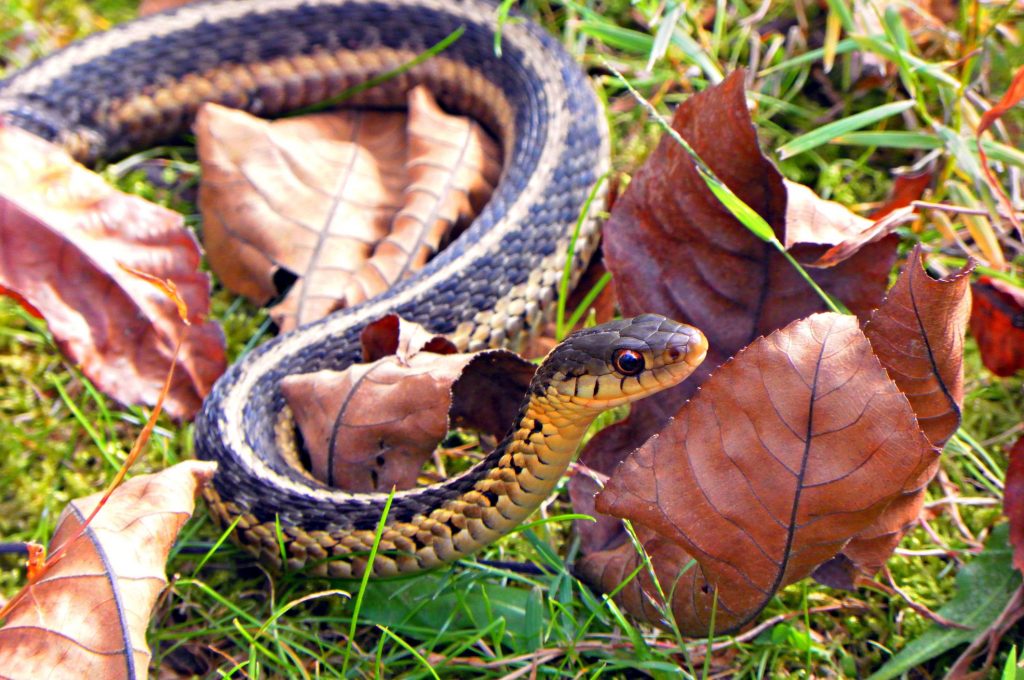Are you looking for tips on how to get rid of copperhead snakes? Copperhead snakes are a common species in the United States, ranging from the eastern states to the central parts of the country. These venomous snakes can be a nuisance and may even be dangerous if they are not managed properly. In this article, we will provide essential tips for preventing copperhead snakes from entering your property and provide suggestions on how to get rid of copperhead snakes if they are already present.
What Are Copperhead Snakes?
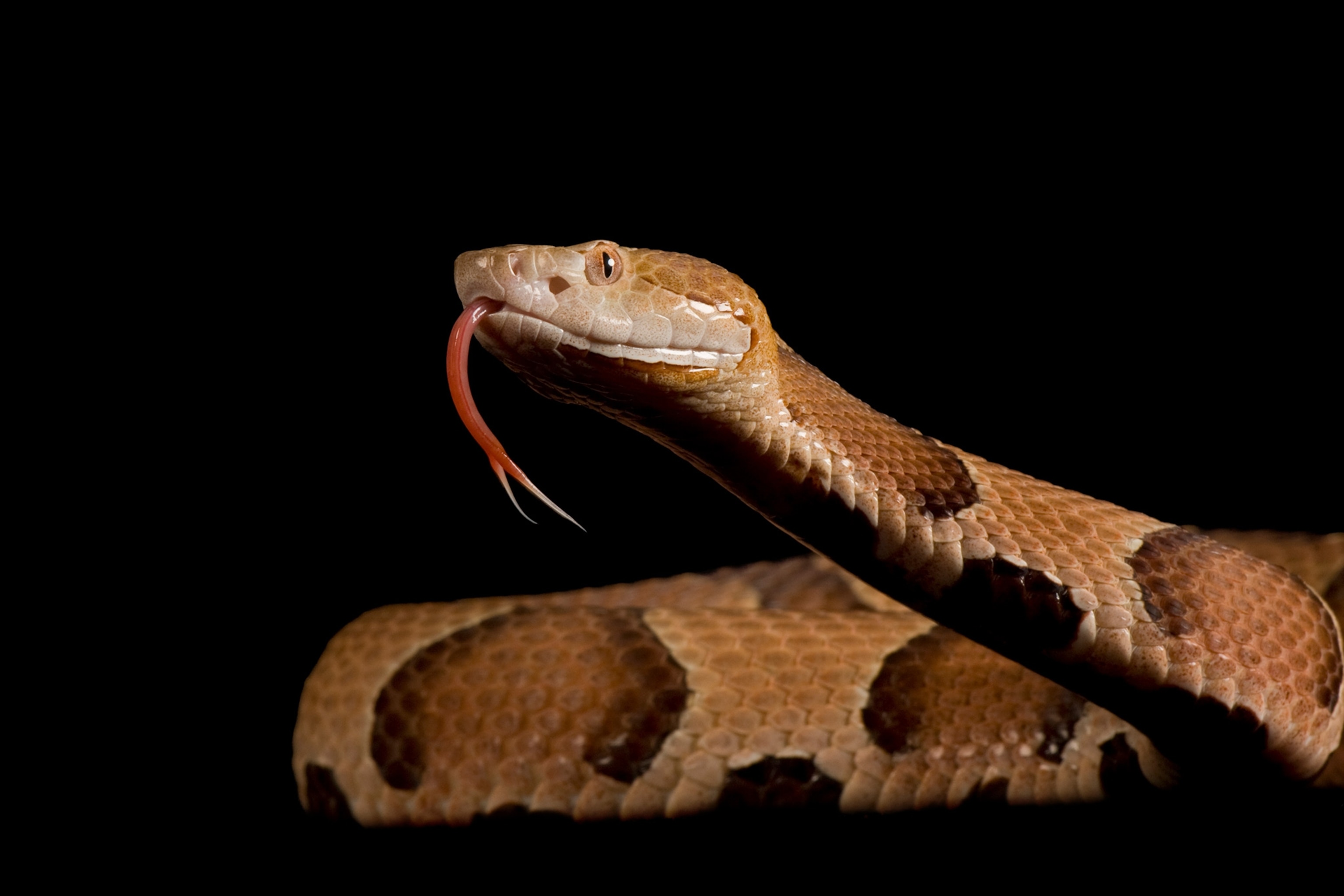
Copperhead snakes are a common species of venomous pit viper found throughout the eastern, central, and southern United States. They are typically identified by their reddish-brown coloring and distinct hourglass-shaped pattern on their backs. Copperhead snakes typically reach lengths between 24 and 36 inches, and can live for up to 10 years in the wild. Copperhead snake bites can be serious, and require medical attention.
Copperhead snakes are typically found in wooded areas, near streams, or in forests. They are nocturnal and typically hunt during the night. Copperhead snakes feed on small mammals, amphibians, and other small creatures. Copperhead snakes are very territorial and will defend their territory if they feel threatened.
How To Identify Copperhead Snakes
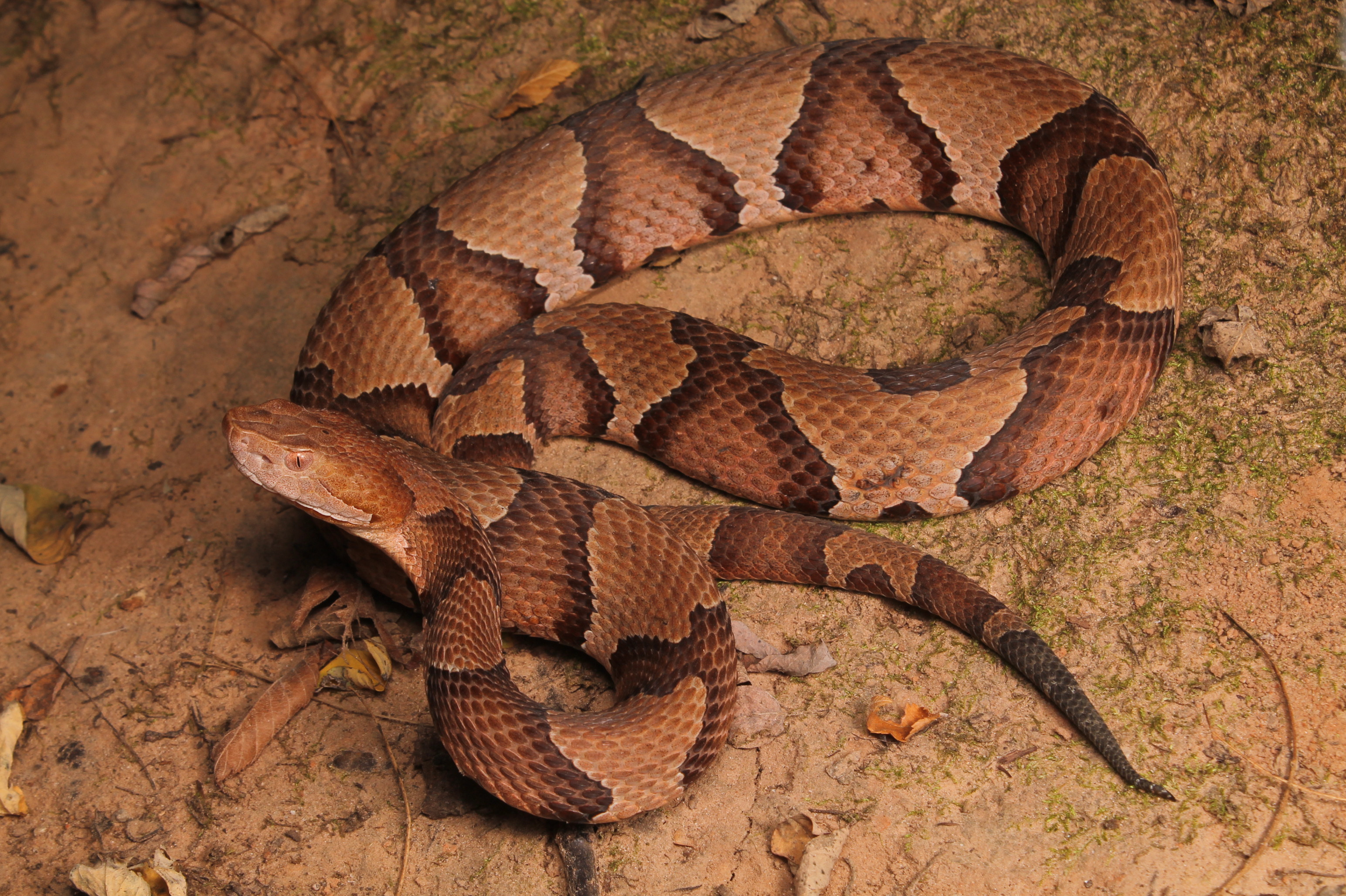
Copperhead snakes are venomous snakes that are common in North America. They can be identified by their distinct pattern of alternating dark brown, black and reddish-brown cross bands on their bodies. The dark cross bands are most easily visible on younger snakes, but as they age, they become more faint. Copperhead snakes have a triangular-shaped head and a copper-colored head. They can grow between 18 and 36 inches in length. They also have elliptical pupils and vertical pupils, which sets them apart from the round pupils of most other snakes. They have heat sensitive pits on the side of their head that help them detect prey and predators. Copperhead snakes are typically found in wooded areas, near streams, and in rocky areas.
Understanding The Habits of Copperhead Snakes
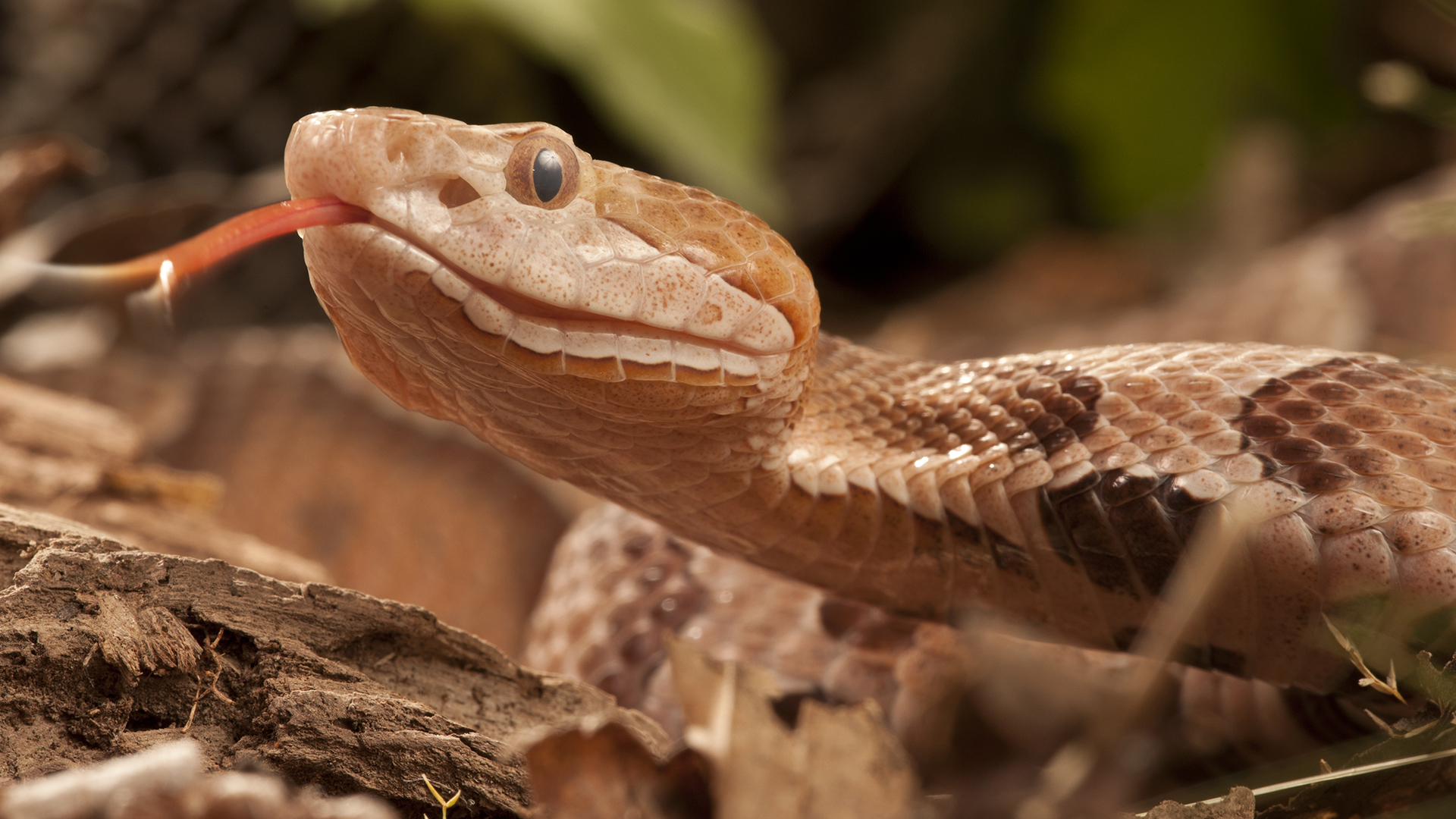
- Copperhead snakes are usually found in wooded areas with rocky outcroppings, often near water sources.
- They are active during the night and during the warmer months of the year.
- They typically hunt for small mammals, lizards, frogs, and insects.
- They hide in crevices and under rocks during the day.
- They are excellent climbers and may be seen climbing trees or other structures.
- They are venomous and will bite if provoked.
What Attracts Copperhead Snakes To Your Home
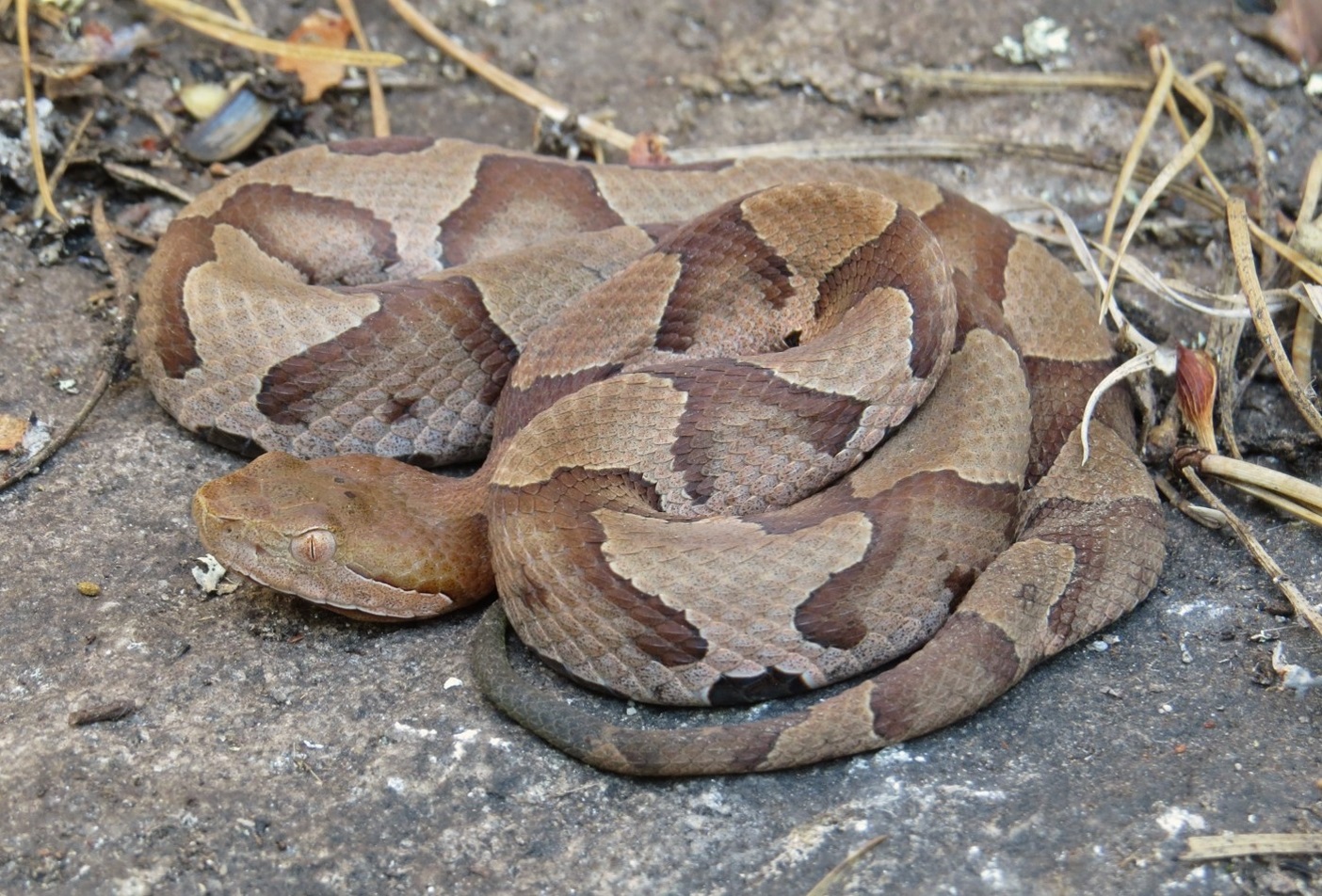
| Factors | Measures |
|---|---|
| Food sources | Limit food sources like rodents, insects, birds, etc. |
| Habitat | Remove or reduce clutter and debris, reduce water sources, and eliminate potential nesting sites. |
| Temperature | Fill in the gaps and cracks around the house, remove vegetation from the base of the house, and reduce the temperature around the house. |
Copperhead snakes are attracted to homes for a variety of reasons. The most common of these are food sources, habitat, and temperature. To minimize the chances of copperhead snakes being attracted to your home, you should limit food sources like rodents, insects, birds, etc. You should also remove or reduce clutter and debris, reduce water sources, and eliminate potential nesting sites. Additionally, you should fill in the gaps and cracks around the house, remove vegetation from the base of the house, and reduce the temperature around the house.
Removing Copperhead Snakes Physically
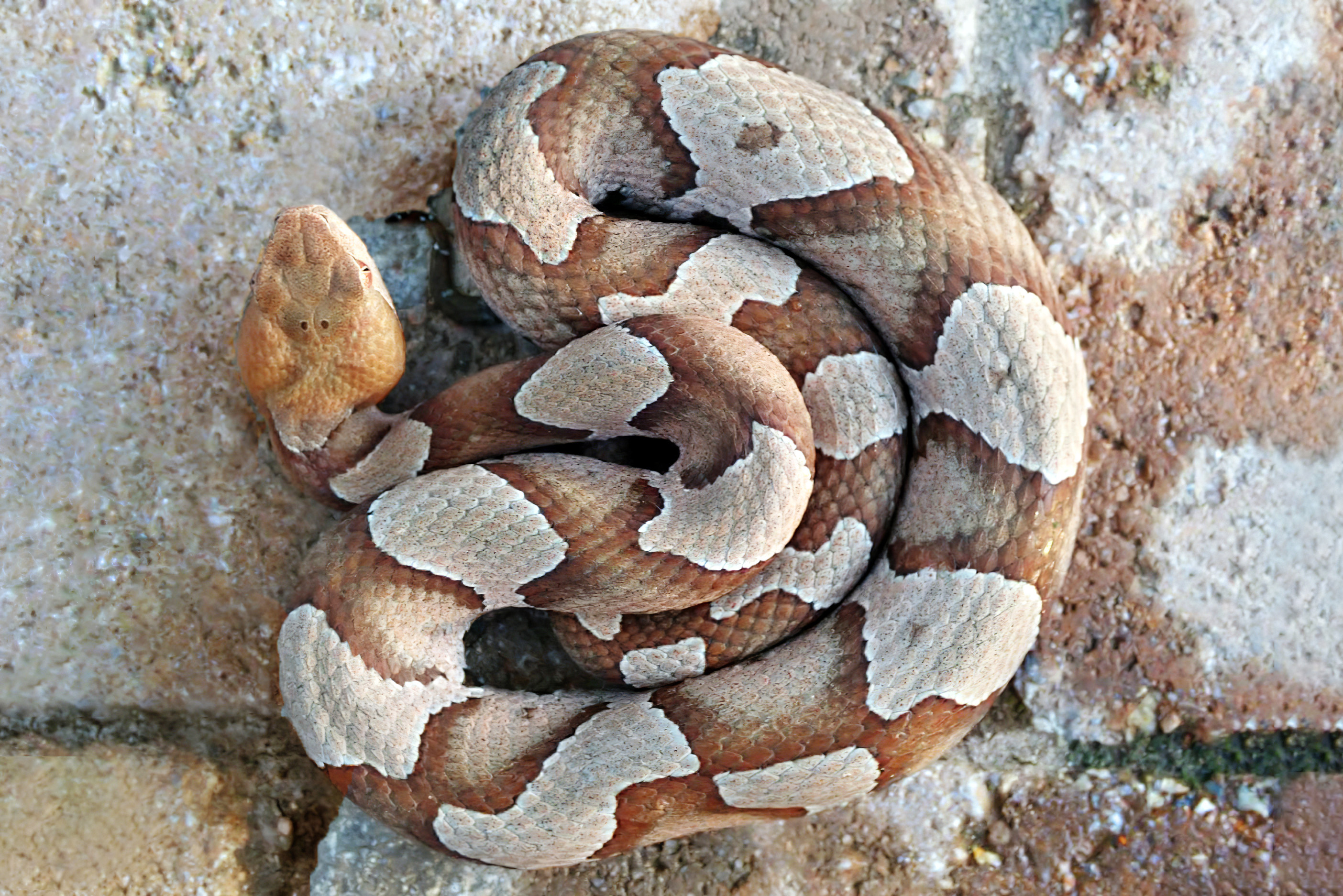
The most common method used to eliminate copperhead snakes is by physically removing them. This can be done using a shovel, tongs, or snake hook. Once the snake is captured, it should be placed in a bucket or pillowcase and released in an area away from the home.
Repellents
Repellents are another option for eliminating copperhead snakes. These products contain ingredients such as sulfur, cedar oil, and cinnamon oil, which help to repel snakes from the area. These products should be sprayed around the perimeter of yards and homes to discourage the snakes from entering.
Reducing The Habitat
The best way to reduce the presence of copperhead snakes is by reducing their habitat. This includes clearing away debris, trimming vegetation, and removing any sources of food such as rodents. These steps can help to reduce the number of copperhead snakes in an area.
How To Keep Copperhead Snakes Away
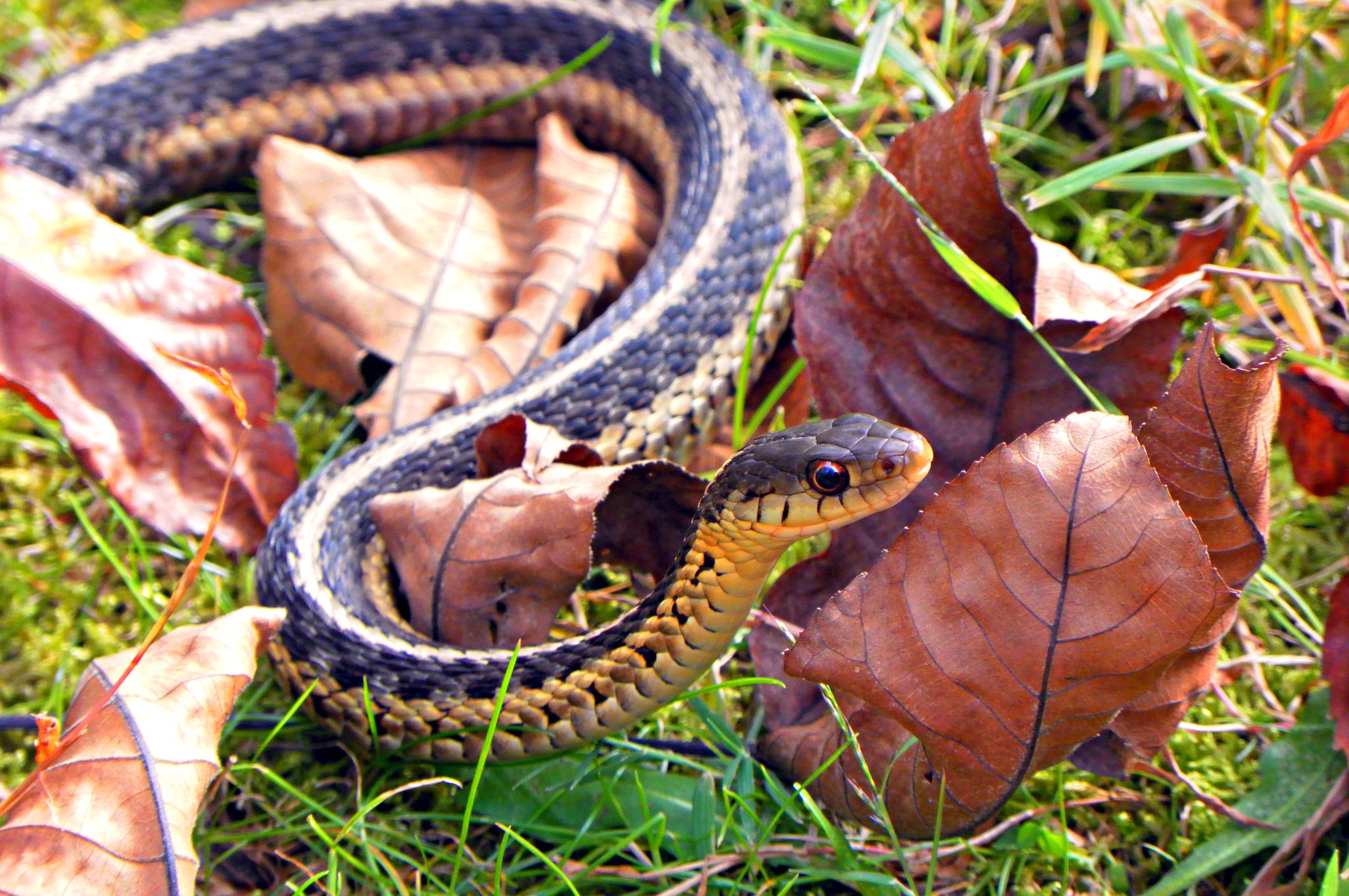
| Method | Description |
|---|---|
| Remove food sources | Copperhead snakes are attracted to food sources such as insects, rodents, birds and other small animals. To keep them away, remove these food sources from your property. |
| Eliminate hiding places | Keep your yard clean and free of debris, rocks, logs, and other objects where snakes can hide. If possible, remove vegetation such as tall grass and shrubs. |
| Install a fence | Install a fence around your property to prevent snakes from entering and leaving. The fence should be at least 3 feet high and buried at least 6 inches underground. |
| Use repellents | There are several commercial snake repellents that can be used to deter copperhead snakes. Repellents containing sulfur, naphthalene, and ammonia are known to be effective. |
| Maintain your property | Keep your property well-maintained. Trim the grass regularly and dispose of trash and other debris. This will help reduce the number of hiding places for copperhead snakes. |
1. Eliminate Food Sources
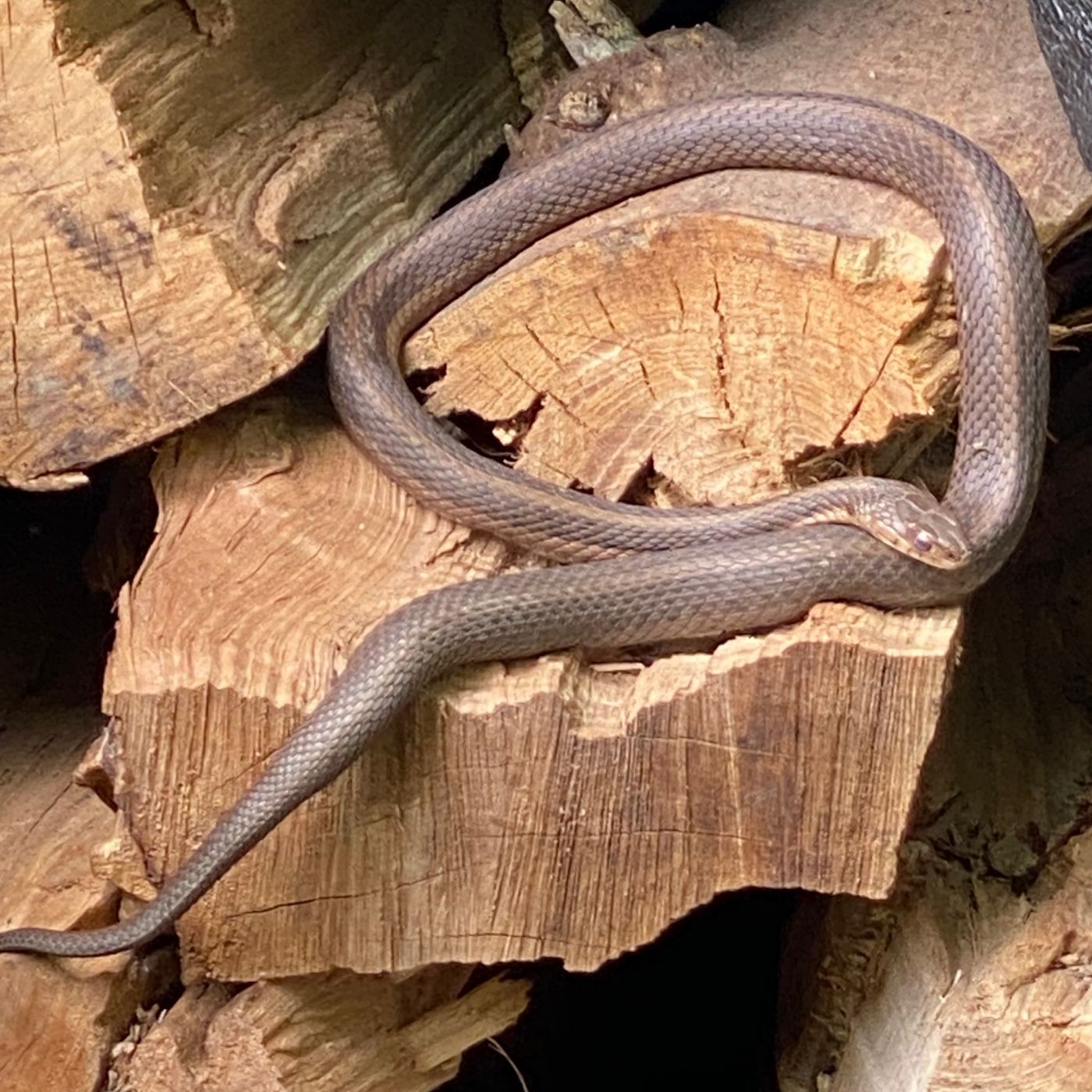
| Type of Food Source | Elimination Method |
|---|---|
| Insects | Remove sources of water, such as bird baths, and reduce areas of standing water. Reduce yard waste and piles of organic debris, as these areas are attractive to insects. |
| Rodents | Keep your home and yard clean and free of food scraps or garbage that might attract rodents. Close any holes in foundations or walls, and use rodent-proof traps. |
| Frogs and Lizards | Keep your yard free of tall grass and weeds, which provide hiding spots for frogs and lizards. Remove any standing water, such as bird baths, as these are attractive to amphibians. Consider installing a fence to keep out larger animals that might attract frogs and lizards. |
Eliminating food sources is one of the most important steps to take when trying to get rid of copperhead snakes. Copperheads are attracted to areas that provide them with food, such as insects, rodents, frogs, and lizards. To reduce the chances of copperheads coming to your home and yard, it’s important to eliminate these food sources. This can be done by removing sources of water, such as bird baths, and reducing areas of standing water. Yard waste and piles of organic debris should also be reduced, as these areas are attractive to insects. To reduce the chances of rodents coming to your home, keep it clean and free of food scraps or garbage. Close any holes in foundations or walls, and use rodent-proof traps. To reduce the chances of frogs and lizards coming to your yard, keep it free of tall grass and weeds, which provide them with hiding spots. Remove any standing water, such as bird baths, as these are attractive to amphibians. Consider installing a fence to keep out larger animals that might attract frogs and lizards.
2. Block Entry Points
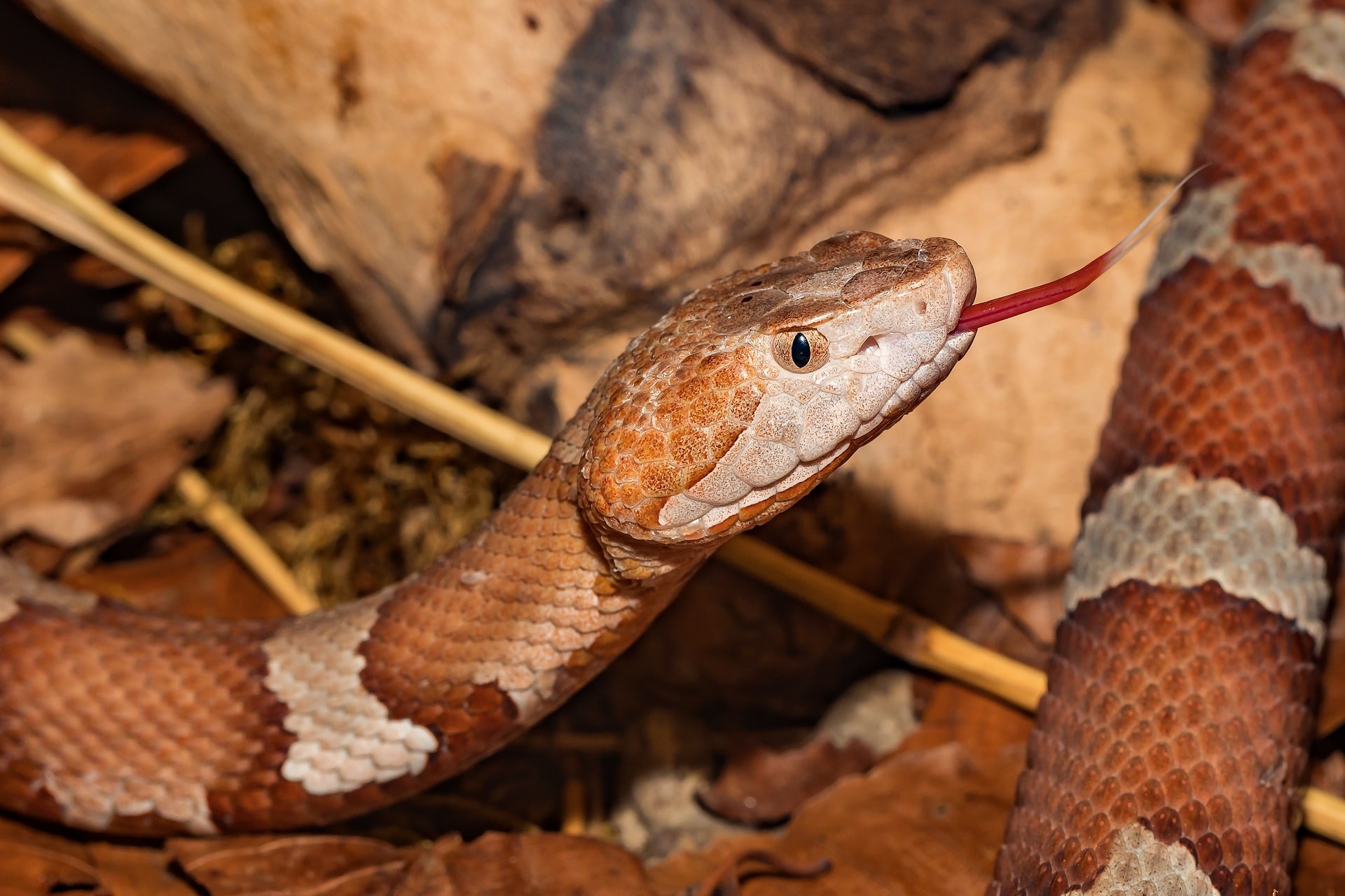
One of the most effective ways of preventing copperhead snakes from entering your property is to block all entry points. This includes any openings such as cracks, holes, and crevices around the foundation of your home. Sealing up these entry points with caulk, foam sealant, or other materials can help keep the snakes out. Additionally, it is important to check around pipes and other utility lines that enter the home, as these can provide an easy entry point for snakes.
| Material | Usage |
|---|---|
| Caulk | Fill cracks and holes around the foundation |
| Foam Sealant | Seal up any openings around the foundation |
| Plastic sheeting | Cover up any entry points around utility lines |
3. Maintain A Clean Yard
| Action | Description |
|---|---|
| Remove Trash & Debris | Remove any trash, junk, or debris from your yard. Copperhead snakes are drawn to areas of clutter because it provides cover and places to hide. |
| Keep Grass Low | Keep your lawn trimmed and mowed to discourage snakes from getting comfortable in your yard. |
| Eliminate Piles of Wood | Remove any piles of wood, logs, or brush from your yard. These are a common hiding place for snakes. |
| Seal Possible Entrances | Check your home’s foundation and exterior walls for any small openings that may be used as an entrance point for snakes. Seal any openings or cracks with caulk, mortar, or other materials. |
What To Do If You Are Bitten By A Copperhead Snake
| Steps | Instructions |
|---|---|
| 1 | Stay calm and still. Do not panic, as this can cause the venom to circulate faster. |
| 2 | Call 911 or your local emergency services as soon as possible. |
| 3 | If you can, try to identify the snake and take a photograph of it. This will help medical professionals identify the species and take the necessary steps. |
| 4 | If possible, safely move away from the snake and remove any clothing or jewelry near the wound. |
| 5 | Clean the wound with soap and water. Do not apply a tourniquet or attempt to suck out the venom. |
| 6 | Keep the affected limb elevated above the heart. |
| 7 | When medical help arrives, tell them everything you remember about the snake. Provide the photograph if you have it. |
Frequently Asked Questions
What are the essential tips for preventing copperhead snake infestations?
Maintain a clean and well-maintained yard: Remove debris, wood piles, and other potential hiding places. Keep grass and vegetation trimmed and cut back overgrown shrubs and bushes.
Secure openings in foundations, walls, and roofs: Cover openings with mesh or hardware cloth, and seal any cracks or gaps.
Secure garbage cans: Use lids and keep garbage cans away from the house.
Eliminate potential food sources: Keep bird feeders away from the house, and use secure lids on pet food containers.
Keep doors and windows shut when not in use: Install door sweeps on exterior doors.
Use snake traps: Place traps near likely entry points.
How can I repel Copperhead Snakes from my Yard?
The most effective way to repel Copperhead snakes from your yard is to make it an inhospitable environment. Remove any debris and clutter from the area, as Copperhead snakes are attracted to these areas for shelter. Keep your grass trimmed short, as taller grass provides more cover for snakes. Cut down on any rodent activity around your yard, as Copperhead snakes feed on rodents. Finally, use a repellent such as ammonia or garlic oil around the perimeter of your yard to deter Copperhead snakes from entering.
What is the Best Way to Get Rid of Copperhead Snakes from My Property?
The best way to get rid of copperhead snakes from your property is to make it an unwelcoming habitat. Start by getting rid of sources of food, such as rodents, by sealing entry points and trapping any animals found in the area. Remove possible hiding places and keep areas around your home free of debris and vegetation. Copperhead snakes can also be deterred with repellents, such as ammonia, cayenne pepper, or sulfur. If these methods do not work, contact a professional to humanely remove the copperhead snakes from your property.
How does a King Snake Kill a Copperhead?
King Snakes will kill Copperheads by constriction, coiling around the Copperhead’s body until it suffocates. King Snakes will also consume their prey, including Copperheads, after they have been killed. King Snakes will not generally attack Copperheads unless threatened, but they will eat any Copperhead they can overpower.
How can I keep copperhead snakes out of my yard?
To keep copperhead snakes out of your yard, you should make the area around your house unattractive to them. This means removing any potential hiding spots such as piles of debris and weeds, and sealing up any cracks and crevices. Additionally, you should keep the lawn mowed and remove any sources of food and water, such as bird feeders and pet dishes. If you have a pond, you should also fence it off to prevent the snakes from entering. Finally, you should install a snake repellent around the perimeter of your yard and reapply it regularly to keep the snakes away.
Conclusion
The best way to prevent copperhead snake infestations is to create an environment that is unappealing to them. Clear out debris and tall grasses, seal up any openings around your property, and use a snake repellent to keep them away. Keeping pets and children away from areas where snakes are known to inhabit is also key. Finally, if you do come across a copperhead snake, call a professional for safe and humane removal.
